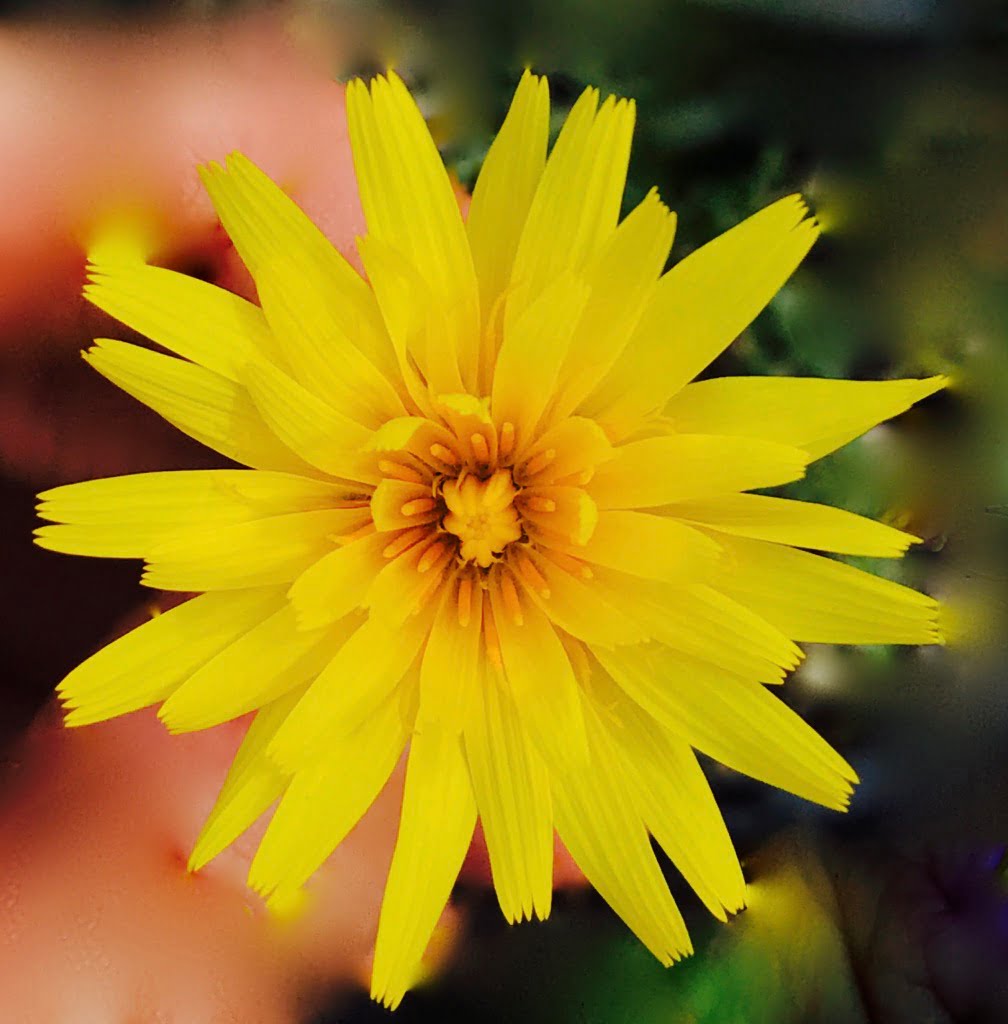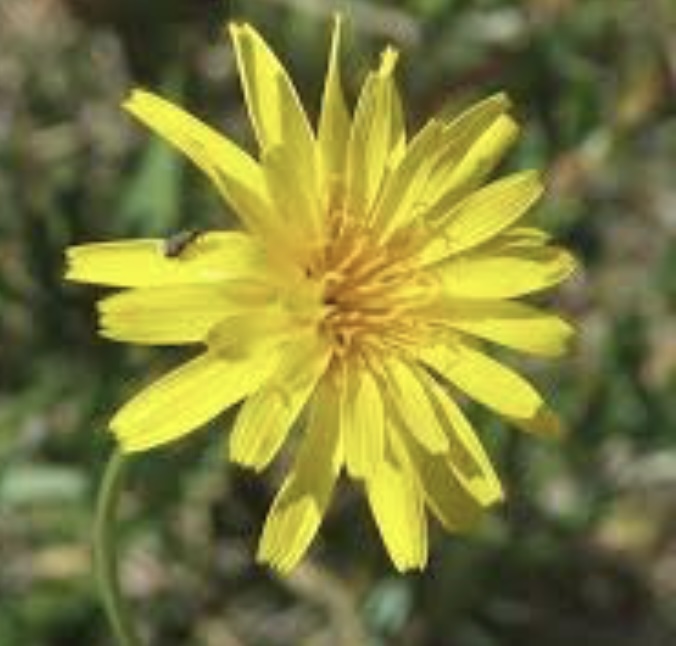
Microceris lanceolata
Common name: Yam Daisy or Murnong, Native Dandelion
- I grow best: Perennial plant, Full sun to part shade
- Height up to 50cms
- Drought frost tolerant, grows in most soil types
- Flowers – Summer, Autumn
- Attracts – butterflies & insects
- Edible roots
- Eastern Suburb Banksia Scrub
Looks like: A variable species found in southern Australia, it looks very similar to dandelions, even having a fluffy seed head which is dispersed by wind. It has a rosette of toothed long and narrow leaves, yellow flowers from spring to autumn, and edible tuberous roots. The roots are roasted before eating, and can also be eaten raw. The plant is quick growing, and likes full sun to part shade. Will do well in most soil types, and while it is drought and frost tolerant, good care will ensure better growth. Perennial herbs growing to 50 cm high with narrow basal leaves that are often without lobes or sometimes with lobes towards their upper parts. Roots are fleshy and often tuberous. Flower-heads are solitary on a leafless and hairless stalk (peduncle) and sometimes nodding. Flowers are bright yellow. Fruit is a cypsela. This small perennial plant has a radish-shaped tuber, which is renewed each year. In the spring the plant forms a yellow flower-head like a dandelion, and in the summer the leaves die off and the tuber becomes dormant. The tubers are cooked in baskets in an earthen oven, producing a dark sweet juice which was much liked.
Habitat & Growing : Grows naturally along coastal areas in southern states of Australia. Once a common plant, Murnong became scare due to grazing by sheep. The Yam Daisy shoots after autumn rains and is recognisable as a rosette of leaves during winter but is only obvious when flowering. Lilies and orchids are not visible for most of the year and even when flowering their small size above ground does not indicate the relatively large importance of their underground parts in the local people’s diet. This plant is a great edible native plant. Propagation is by seed, which germinate in a couple of weeks, old seed (over 6 months old) has a much lower germination rate. Sow in autumn to early winter, as hot weather limits germination, and sow on the soil surface as darkness limits germination. A small sprinkle of sand or seed raising mix over the top of the seed will help it not be blown away. Alternatively, push seed down into soil with the fluffy top (the pappus) exposed on the soil surface. Keep moist until germination.
Eco Friendly Seed Starting Kit: Propagation Instructions
1. Place coir tablet in a container with warm water.
2. Once the coir tablet has expanded, pour excess water out of the container, cut the netting off and transfer the coir into the peat pot.
3. Place seeds in the pot and cover lightly with the coir.
4. Keep in a sheltered position where it can receive morning sun, gradually exposing to full sun.
5. Keep moist until germination.
6. Once seed is germinated, you can plant in next size pot or plant in your garden.
7. Ensure pot is under soil level, push down gently and water well.
| Family | Asteraceae |
| Plant Type | Bulb or bulb-like |
| Width | 0.3 |
| Flowering Time | Spring, Summer, Autumn |
| Soil Type | Sandy, Loamy, Sandy loam, Clay loam, Potting mix |
| Climate Zone | Warm temperate, Cool temperate, Mediterranean, Cool, Semi-arid |
| Soil Moisture | Dry, Well-drained, Moist moderate drainage |
| Special Uses | Edible, Erosion control, Pipe and drain friendly, Fast growing, Playground friendly |
| Height | 0.5 |
| Flower Colour | Yellow |
| pH Level | Acid, Neutral, Alkaline |
| Plant Environment | Low maintenance garden, Courtyard, Container growing, Cottage garden, Flower garden, Drought resistant, Wildflower meadow |
| Light | Sunny, Light shade |
| Lifespan | Biennial, Perennial |
| Frost Tolerance | Tolerates light frost |
| Attracts Wildlife | Bees, Butterflies, Other insects |
Traditional uses: Yam Daisy was a most important staple food. Women dug the roots with digging sticks and then roasted
them in baskets in an earth oven. Aboriginal people believed that the roots of ‘murnong’ should not be collected before the plants flowered. This was probably because during the drier winter period before springtime flowering, the roots would not be fully developed.

